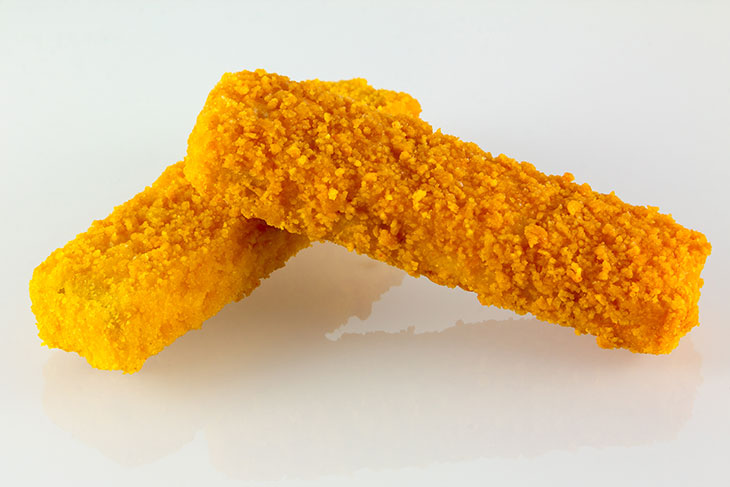Breaded fish are sold at a low price, are easy to cook and it is not uncommon to find them in our freezers… but what do they really contain? A CLCV survey shows alarming results.
Too many additives, flavorings, added sugars and little fish
Are breaded fish a danger to our health? A study conducted by theNational Association for the Defense of Consumers and Users (CLCV) reveals yes! This food consumed by many of us would contain far too many additives, aromas, added sugars and little… fish.
To conduct its study, the CLVC studied 42 classic breaded fish products (meunière breaded, croquettes, nuggets, fish and chips). The products studied come from fresh or frozen shelves. “In particular, we observed differences in the quantity of fish between the products, an unequal nutritional quality as well as the presence of too many additives and flavourings”indicates the CLCV.
Among the products that the consumer association studied for its study, 52% contain additives like modified starches (corn, wheat, etc.), acidity regulators, preservatives or antioxidants. On average, a product with additives contains only 3.7%. A far too large gap that “challenges” the CLVC. In addition, 38% of the products studied are composed of added sugars (sugar, dextrose, maltodextrin), and 21% contain flavorings.
The percentage of fish can vary from 35% to 80%
Even more surprising, by eating breaded fish, we would actually eat very little fish. The percentage of fish in all the products studied can vary from 35% to 80%, which makes an average of 63.2% fish in a product. “It’s better than two years ago”, say the authors of the study. In contrast, breaded fish for children contains “on average less fish, only 59%”.
According to Marine Desorgefood project manager for the CLCV, the price does not necessarily indicate good quality fish: “In the products that we recommend for their nutritional quality and their proportion of fish, we finally find both big brands and private labels. » For those who cannot do without breaded fish, the CLCV reveals that the least dangerous for health is that of the Casino brand with 70% hake and 0.37 grams of salt.
Where do they really come from?
The packaging is also a problem because it does not give enough indication of the origin of the fish and how it was caught. ” The geographical origin of the fish is unknown in two thirds of the products studied and almost 90% of the breaded products do not indicate the fishing method “, indicates the CLCV. This indication is important for some consumers who want to know if the region from which the fish comes is overfished and therefore endangered.

[related_posts_by_tax taxonomies=”post_tag”]
The post Beware of breaded fish appeared first on Gamingsym.

